Extreme piercing: A festival of self-inflicted pain
- Published
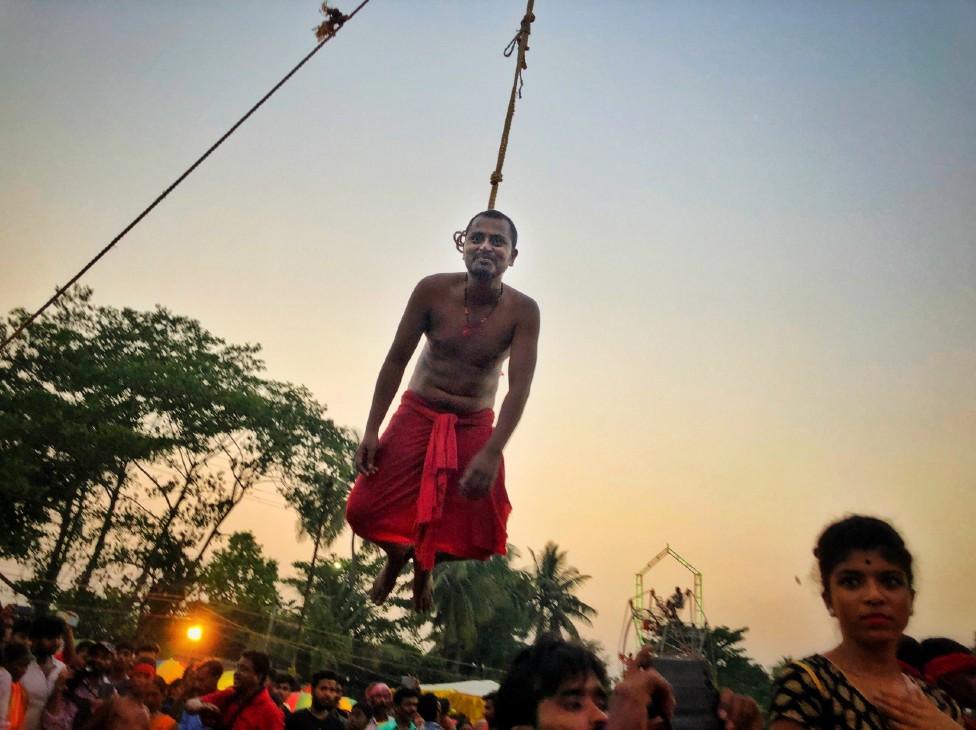

Warning: Some readers will find the images of piercing disturbing
An ancient pre-harvest festival in India's state of West Bengal, in which men pierce themselves with iron rods and hooks, was cancelled this year due to coronavirus. But Sahar Zand - who attended the event last April - reports that many local people believe that without this show of devotion to the Hindu deity, Shiva, crops are bound to fail.
It is early morning one day in mid-April, almost exactly a year ago. On the bank of the river Ganges, a handful of young men are sitting in a circle under the shade of a big tree. They are wearing bright red and are carefully sharpening iron rods, called bursees, each about 2ft (60cm) long. The sharper the rod, the lower the risk of injury in the ritual that awaits them later in the day.
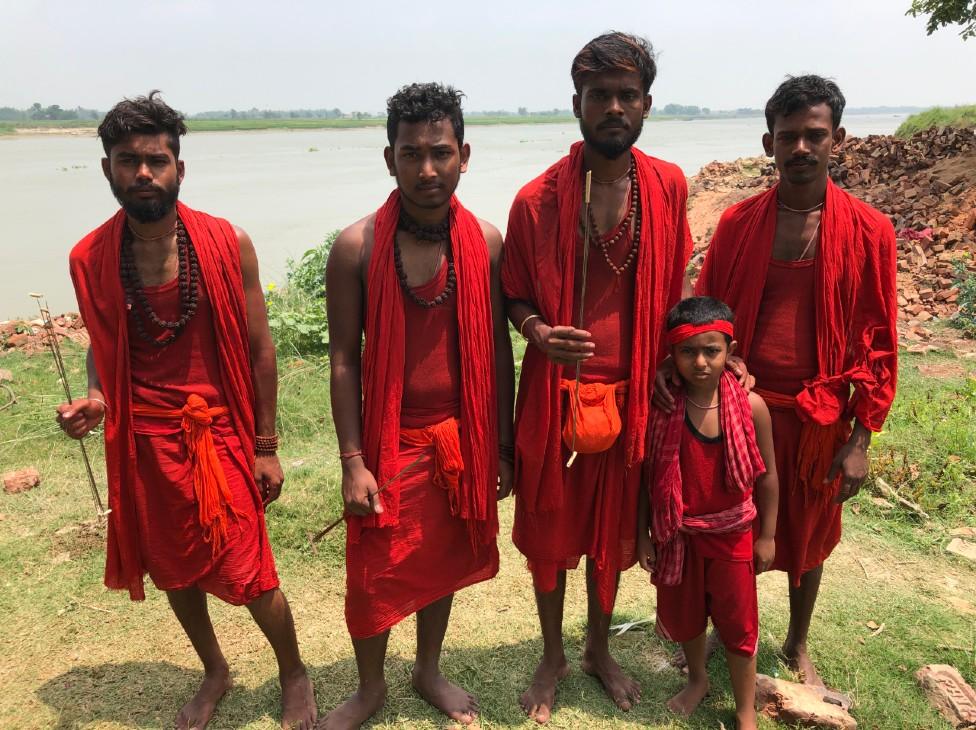
Sandos (left) and friends, on the riverbank
The oldest member of the group, Sandos, 26, is the only one in this group who has taken part in the self-harming rituals before. Over the years he has had his lips, ears, arms, chest, belly and back impaled, he tells me. Yes, it was painful, he says. "But pain is temporary, it's the reward that will last. We all have to pay a price to get what we want."
The reward they are seeking is a good harvest. In the village of Krishnadevpur in West Bengal, the pre-harvest festival of Gajan, coinciding with the end of the Bengali calendar, is the biggest celebration of the year. Participating is the ultimate way for the farmers to demonstrate their devotion to Hindu deity Shiva, who they believe is responsible for granting them a favourable climate for their crops.
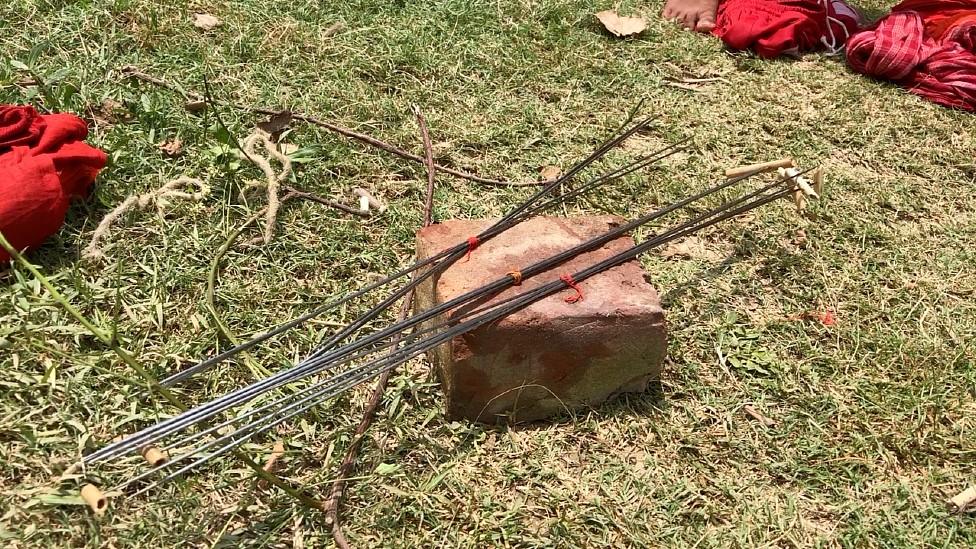
"Once we start the rituals," Sandos tells me, "our Lord Shiva will possess us, and we gain his superhuman strength and courage."
Listening carefully is Rahul, who says he has been pushing his parents to let him take part since he was 10. He's now 15 and this year, after a series of poor harvests, his parents have reluctantly agreed.
"Shiva is not happy and that is why we are all suffering, he is punishing us," Rahul says, as the rest of the group nods in agreement. "So to protect ourselves and our families from his rage, it is now more important than ever to prove our devotion to him."
Once the iron rods are sharpened, one by one, the men dive into the holy river to purify their bodies and souls.

For the last six years, 22-year-old Ajoy has also taken part in Gajan, but not this time. He has grown sceptical. "When I'm not seeing any results, why would I continue to harm myself?" he asks.
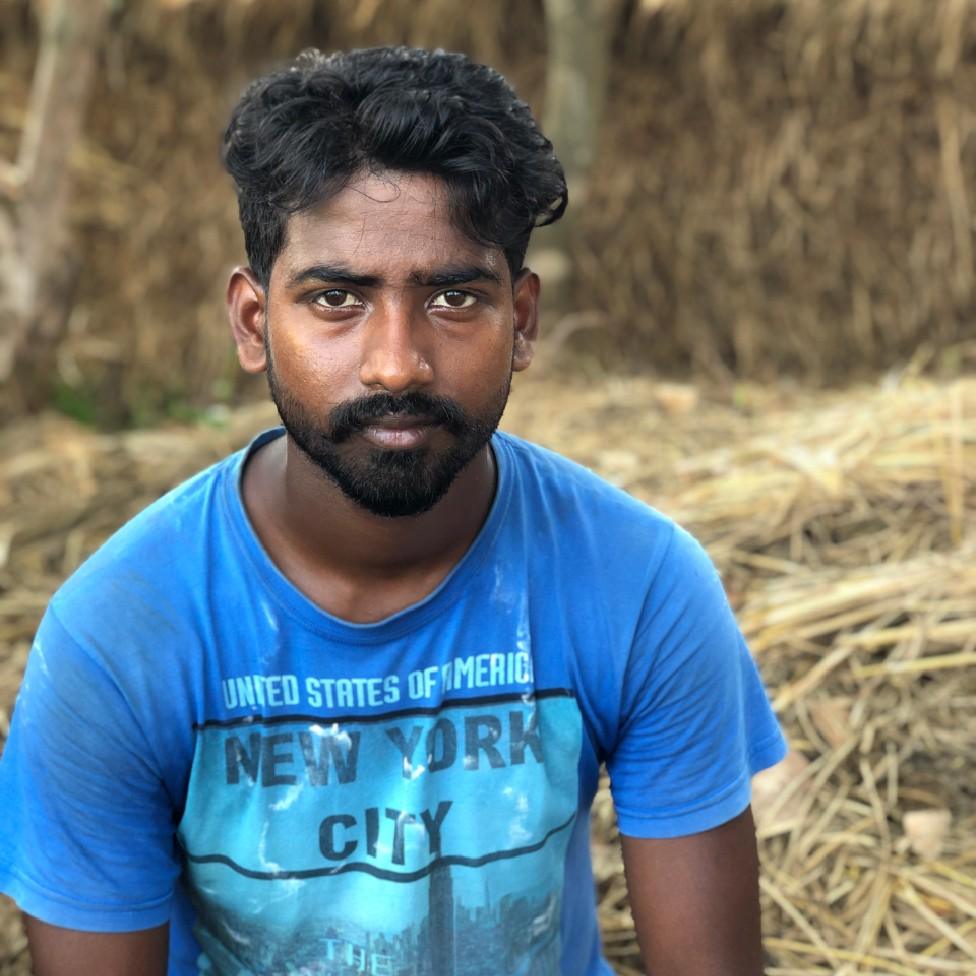
He takes me to his family farm. Rows of rotten vegetables stretch before me, bordered by bare mango trees and fly-infested fruits.
"Sometimes we get no rain at all when we're supposed to and our crops die in a drought, other times we get such untimely and heavy rain that our fields flood and our harvest gets ruined," he says. Heatwaves have also been becoming more intense.
The problem is climate change, Ajoy tells me, not Shiva's rage, and once he finishes studying Bengali literature at a college in Kolkata, he has decided to look for a job elsewhere.

Later in the day, as the festival is about to begin, hundreds of people fill an enclosure the size of a football field: there are women in colourful saris, excited children running around, bonfires, the smell of local snacks and spices, and loud music booming from loudspeakers.
Sandos and Rahul are gathered in the centre of the field with another 100 or so men who, like them, are wearing nothing but a red cloth around their waist. "Shiva is the most powerful deity," they chant, "and all his devotees must participate in his worship."
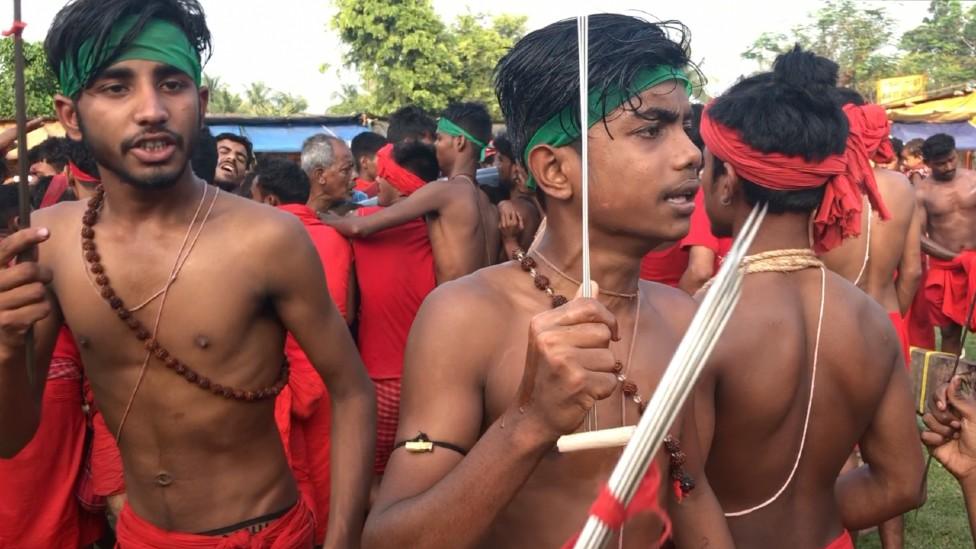
Rahul (centre) chanting
They have been chanting this mantra for hours - it is a crucial part of a process that is meant to bring them into a state of trance. They must fast on the day of the festival but may drink alcohol and smoke marijuana. This is all thought to reduce the risk of injury.
As Rahul dances around the priest who will shortly be impaling the devotees, his eyes are wide open but he looks right through me.
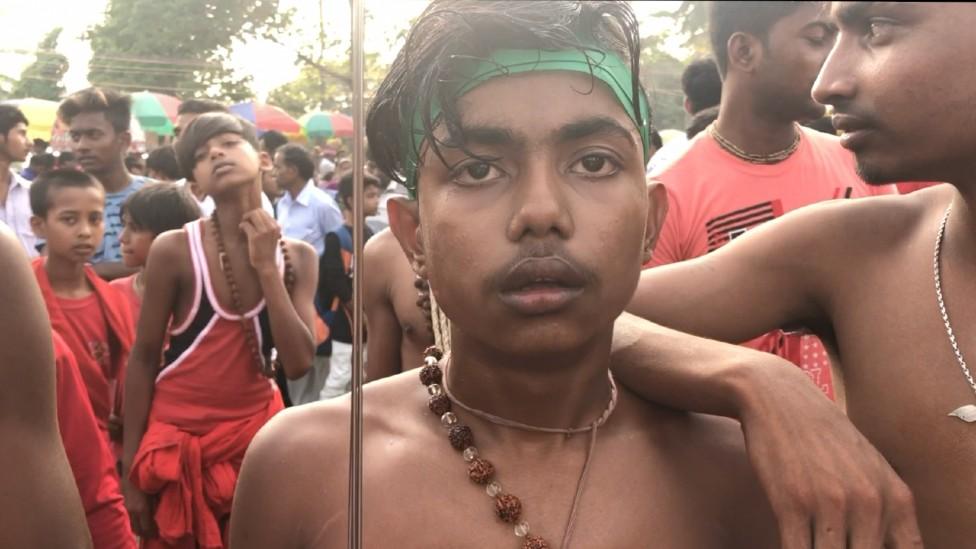
The crowd starts tightening as the impaling begins, the women ululating.
I turn away involuntarily. When I look back I see that a couple of devotees, still chanting Shiva's mantra, already have several iron rods in their flesh - in their cheeks, ears, lips, nose, chest, arm, back.
The priest takes one of Sandos's sharpened rods and rubs it against a banana for lubrication. Muttering a mantra, he begins to pull on Sandos' cheek. Quickly he pierces it with the rod. It goes in one side and out the other. Sandos frowns and his whole body trembles. The priest penetrates the same cheek with two more rods, leaving them all in.
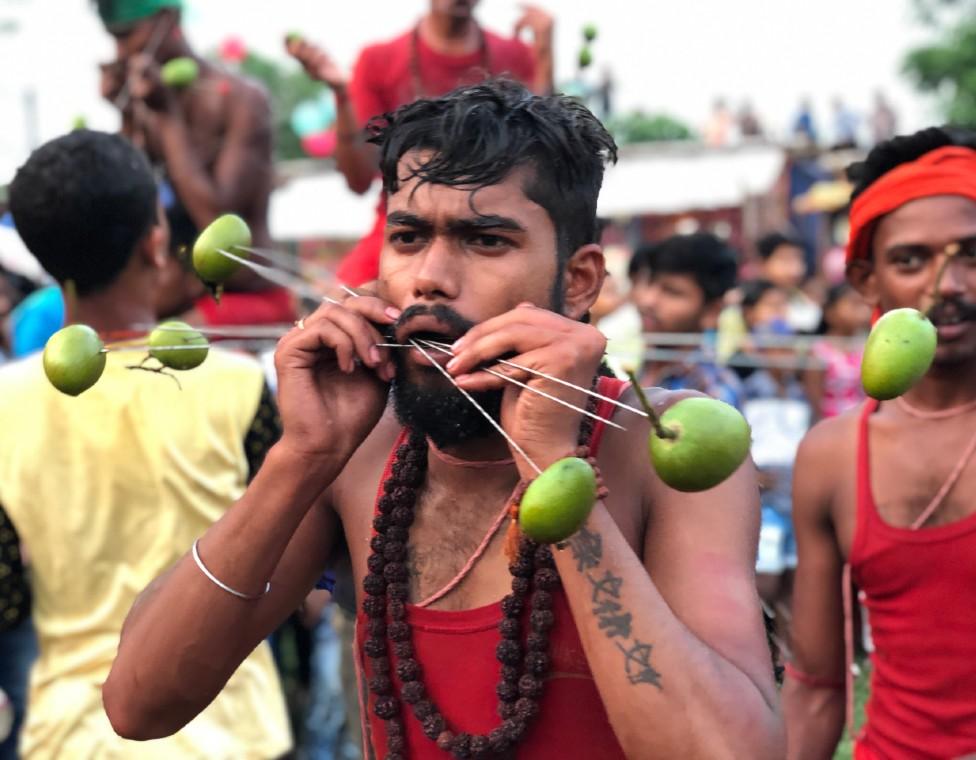
Sandos holding the bursees the priest has thrust through his cheeks
Rahul is next. He steps forward, his eyes tightly shut. The priest starts with his earlobe. Next his lower lip, which receives several piercings, as does his upper lip. Finally, the priest makes two wounds, each an inch deep, in Rahul's chest, leaving the rods in. A small teardrop is the only sign of pain I see on his face.
He tries to continue chanting Shiva's mantra but his words come out muffled - the iron rods sticking out of his face clearly restrict his facial movements. Another devotee picks Rahul up on his shoulders and starts parading around in a circle with the others, watched by the community.
To my amazement, I do not see a single drop of blood in the entire process.
But the festival is not quite over yet. The devotees are now preparing for Charak Puja, the last and arguably most gruesome part of the festival. For this closing ritual, self-torture is taken to the next level. A few experienced devotees will swing on a carousel, hanging from nothing more than two hooks pushed through the skin on their backs.
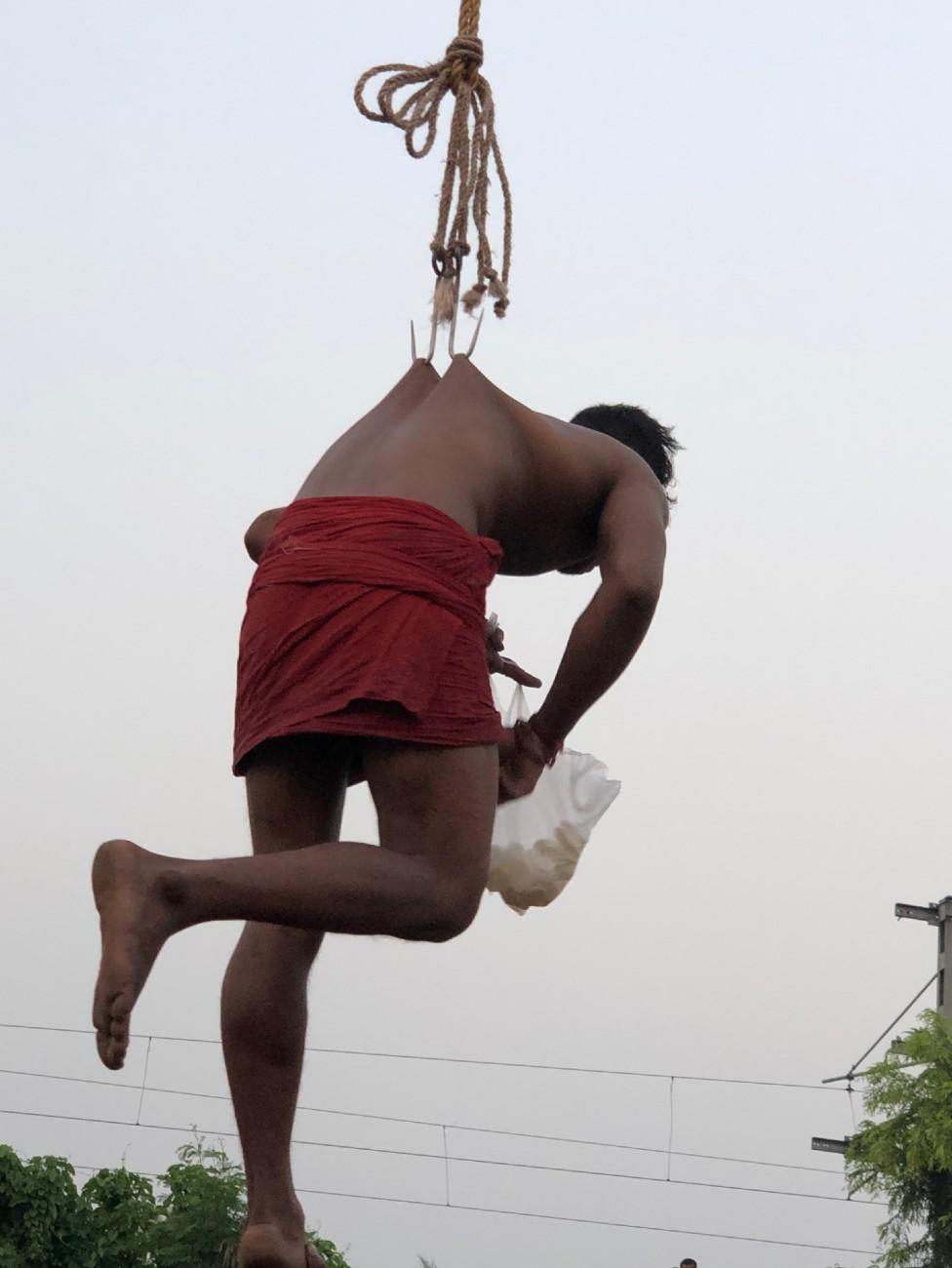

First in line is Suman. He's 34 and says he's been taking part in Gajan rituals every year since he was 12.
At first the priest refuses to impale him, arguing he has no more space left on his back. But when Suman angrily insists, the priest slaps his lower back, grabs a handful of his flesh, stretches it as far he can, then forces the hook through. Suman's fists clench tightly, his eyes clamp shut, and the veins on his forehead look like they're about to pop. He faints.
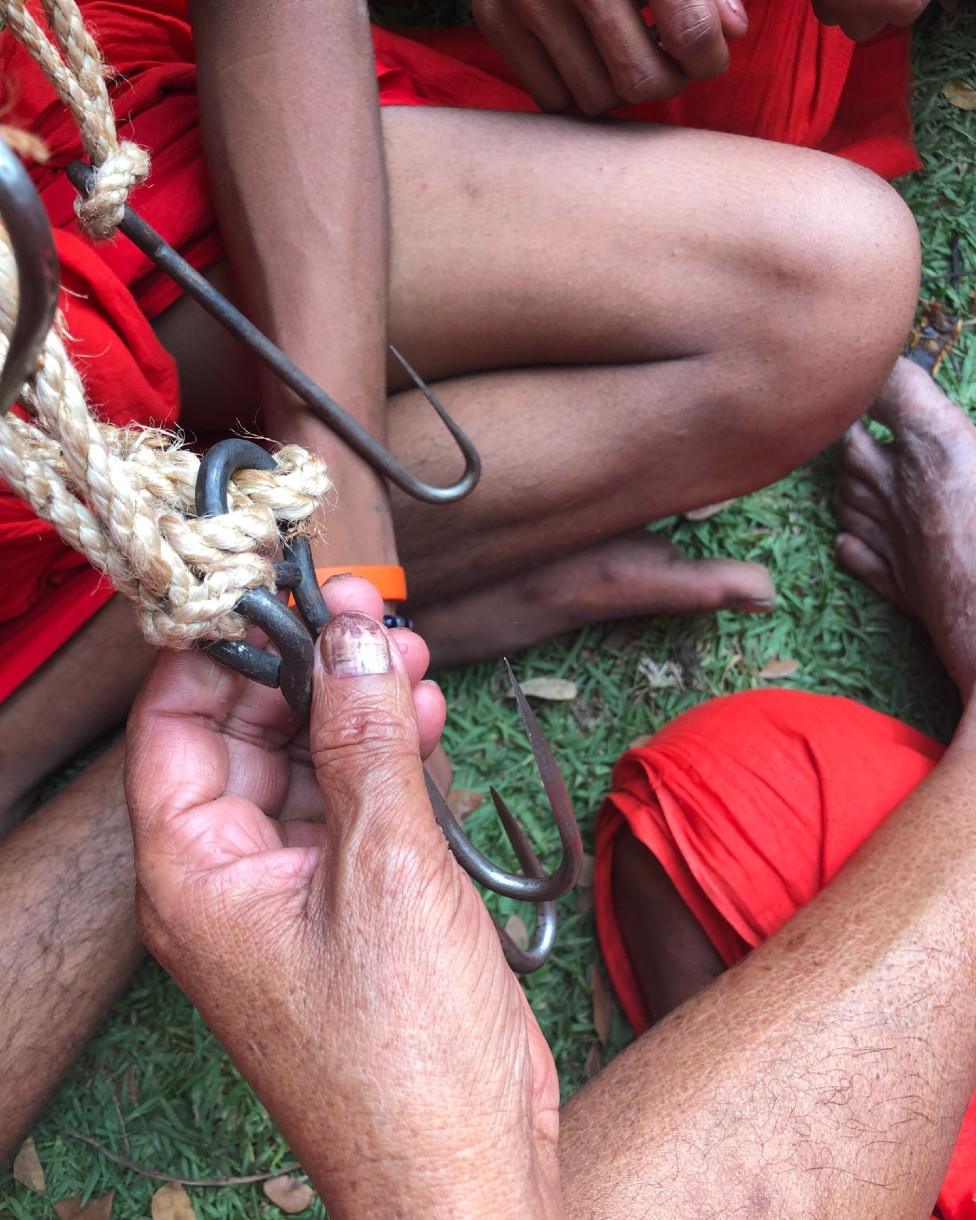

They pour water on him and slap him to wake him up. Then he gets up, holding on to another devotee for balance, who directs him on to a platform to get on the carousel. They tie the rope to the hook.
Suman is counterbalanced by another devotee on the other side of the carousel, both rotating as the rest of the attendees cheer them on. They display no sign of pain. Suman is smiling and interacting with the crowd underneath him.
After a few rounds, the carousel slows down and Suman grabs one of the many babies that parents are holding up to receive Shiva's blessing. Suman and his counterpart hold a crying baby for one rotation, then return it to its parents and grab another.
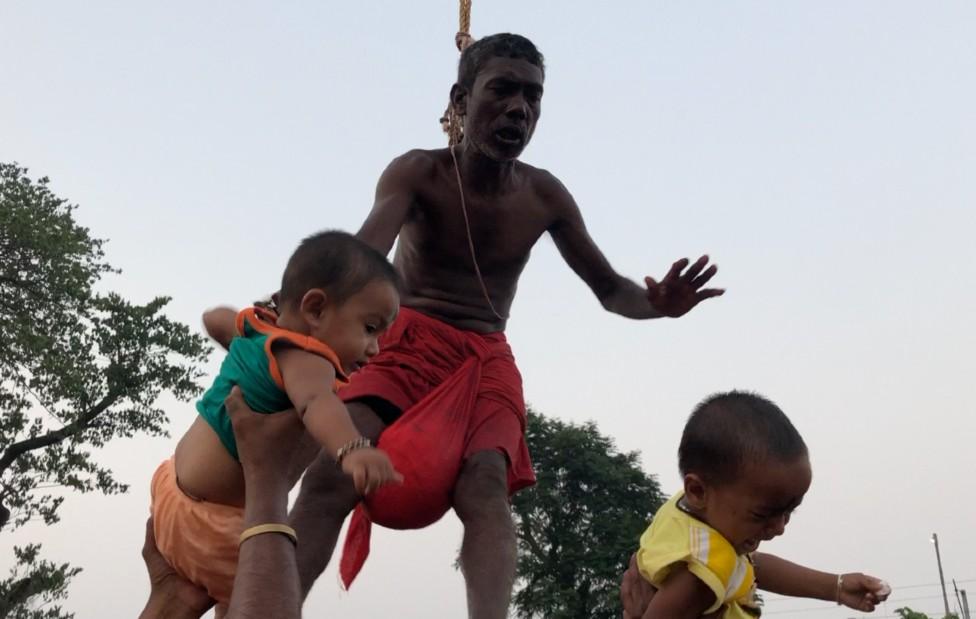
"As long as the devotees are up there, they are not themselves, but they're Shiva in disguise," one mother tells me. "When my lord has my baby, I have nothing to worry about."
After about 10 minutes, the carousel stops and Suman gets off, replaced by another devotee. "The whole time I was up there, I felt spiritually connected to god, I felt like a bridge between him and the rest of the community," he tells me with hooks still in his back.
I ask him what he thinks would happen if Gajan was to stop taking place.
"It'll be the end of the world," Suman responds without hesitation. "Lord Shiva's rage will destroy us all."

But this April, as the community was preparing for Gajan, the Indian government imposed a lockdown due to Covid-19.
This year Gajan did not take place - perhaps for the first time in thousands of years.
Photography by Sahar Zand - listen to her radio documentary Walking on a Hot Coil for Heart and Soul, on the BBC World Service